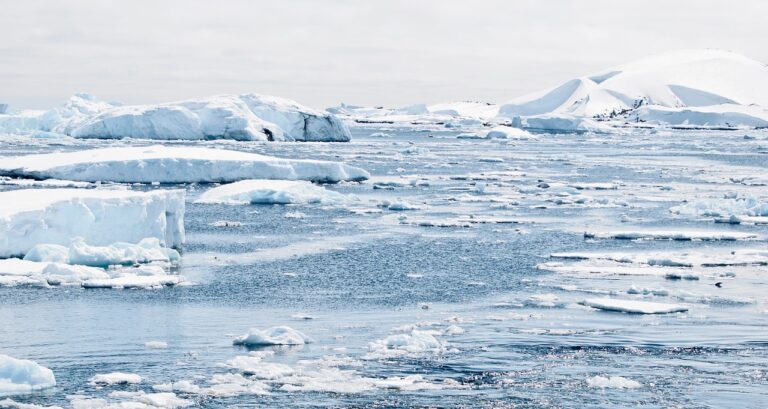One of the most urgent problems affecting our planet right now is climate change. The Earth’s average temperature has risen by 0.8°C since 1880 and is projected to increase by a further 0.5°C by 2050. Despite the fact that this may not seem like much, it has already had a big impact on our weather and ecosystems.
Now, a team of scientists has proposed a radical plan to combat climate change: to refreeze the North and South Poles.
There are still numerous technological obstacles to be solved because the strategy is still in its early phases. However, the plan to refreeze the North and South Poles may be a potent tool in the fight against climate change if it could be made to work.
Table of Contents
The plan to refreeze the North and South Poles
Concerning climate change and its effects on Earth have been collected and analyzed by a team of international researchers. Their report, which was published in the journal “Nature”, points to the melting of the ice caps at an alarming rate.
Unless greenhouse gas emissions are decreased, the report predicts that the global temperature might increase by up to 4.5 degrees Celsius by the end of the century. The findings also showed that the Earth has already lost around 30% of its ice mass since the Industrial Revolution.
The researchers say one way to combat this problem is to refreeze the Poles. This would be done by using giant mirrors to reflect sunlight away from the Earth, cooling it down. The team admits that their plan is a “long shot” but says that it is worth considering as a last resort option.
How the proposal to refreeze the North and South Poles would work in detail
First, a giant artificial ice sheet would be built in the Antarctic. This ice sheet would act as a reflective barrier, helping to reflect sunlight and heat back into space.
Then, coolant pipes would be placed underneath the ice sheet, pumping cold water up to the surface. This would help lower the surrounding area’s temperature, slowly freezing the ice.
It would take many years for this plan to be fully implemented, and there are still some unknowns about how it would work in practice. But if successful, it could help to slow down or even reverse the effects of climate change.
There are other, more radical proposals for how to refreeze the poles. One idea is to use giant mirrors to reflect sunlight away from Earth. Another is to build a “sunshade” in space that would block some of the sun’s rays from reaching our planet. But all of these ideas come with a lot of unknowns and risks.
So far, the most practical and realistic plan for how to refreeze the poles is the one described above. But even this plan is fraught with challenges. It will require a huge amount of resources and money to build, and it’s unclear if it will actually work. But if we don’t act soon, climate change’s effects will only worsen.
And so, we must continue to explore all possible options and innovations to combat this global problem.
What are the potential benefits of the proposal
There are many potential benefits to scientists’ proposal to refreeze the north-south pole. One of the most important benefits is that it would help to restore the global climate. The north-south pole acts like a giant air conditioner, regulating the Earth’s temperature. If the north-south pole warms up, it can cause the Earth’s climate to become unstable, leading to drastic weather changes and potentially even a new ice age.
Another benefit of refreezing the north-south pole is that it would help to preserve the Earth’s biosphere. The north-south pole is home to a vast array of plant and animal life, including many endangered species.
If the north-south pole warms up, it could cause the extinction of many of these species. Refreezing the north-south pole would help to ensure that these species survive. Finally, refreezing the north-south pole would also have economic benefits. Natural resources, such as oil and gas deposits, are abundant at the north-south pole.
The potential drawbacks of the plan
Scientists’ proposal to refreeze the north-south pole has a few potential drawbacks. One is that it could potentially disrupt the Earth’s climate and weather patterns.
Additionally, it would be an extremely expensive undertaking, and there is no guarantee that it would actually work.
Finally, some environmentalists might argue that it is not worth trying to “fix” the problem of climate change when there are other, more sustainable ways to address it.
Is refreezing the Poles a good idea?
Some scientists believe that refreezing the north and south poles is a good idea, as it would help to offset some of the effects of global warming.
However, others are concerned that this could have negative consequences, disrupting global ocean currents. The question of whether or not to refreeze the poles requires more research.
Read also: Climate change: in which ways it is caused by humans












